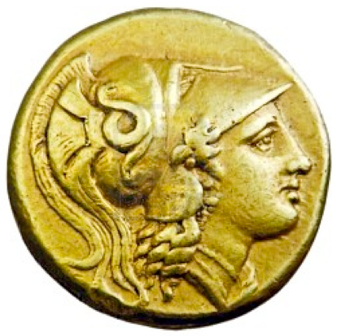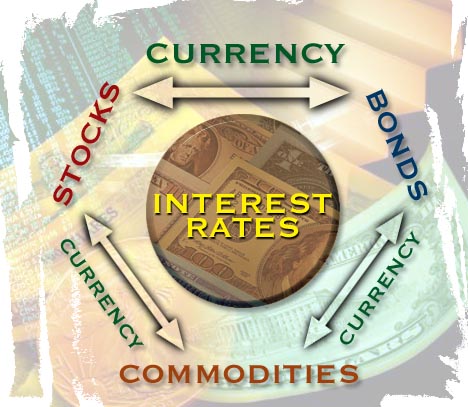Timing & trends
Last year, I was at a dinner with a bunch of fertilizer analysts from Wall Street and Toronto. To my right was a guy who was really getting on my nerves:
Annoying analyst: We have PotashCorp at overweight. We believe with the structural deficit in potash that —
Me (interrupting): I have a sell on it and dropped coverage.
Annoying analyst: You did what? What did you do that for? Is your firm making a strategic change in direction? You can’t cover fertilizers and drop PotashCorp! (chuckling incredulously.)
Me: I can. I don’t have to cover anything. I cover what I like. When the Street hates the stock, I’ll put it back at buy.
I think the other analysts thought I had six heads. But I do remember one analyst made a point of coming around to me afterward and asking for my card.
Most of the time I just go with the flow. I am an easygoing fellow. But every now and then I like to tweak these clowns. I remember I was at a conference in which about a dozen companies presented. After one company’s presentation, I got tired of hearing all the softball questions and the overly promotional CEO fielding them. Listening to him, you’d think his company were the greatest thing since sliced bread, instead of a flimsy money loser.
So I got in the queue to ask a question. Finally, I got the chance to ask the obvious:
Me: This may seem like a simple question, but I hope to get a serious response… Why doesn’t your company make any money?
CEO: Excellent question!
But sometimes the Street is overly pessimistic. I remember being at a conference in February 2009. There were about 16 companies presenting. The mood was glum. One CEO stood up and said, “It feels like a funeral.” It did. The world was ending. In six weeks, we’d all be eating dog food and howling at the moon. So everyone seemed to think.
At lunch, at about the midway point, I was just trying to make conversation with the analyst next to me:
Me: So you have any favorites you like so far?
Analyst: How about none of them.
I’ll always remember that. Here were some great little industrial companies selling cheaply. And no one was excited. I left that conference determined to recommendFlowserve (NYSE:FLS), which has done very well since. I met the CEO after his presentation, standing alone in the hallway drinking his ice water. I was the only one who came up to him.
A year later, I went to the same conference. The stock had doubled. But the room was full and the CEO wasn’t alone standing in the hallway after giving his talk.
Sometimes I have to hurdle some skepticism from people who are not sure what I’m up to. I remember I called up one CFO of a small company. I told him who I was and what I did and that I was thinking of recommending his stock, but I had some questions first. I remember he said, “Well… How much is this going to cost me?”
Ha! Obviously, he had been approached by others before who wanted some kind of compensation for writing favorably about his stock. The idea that I was truly independent, beholden only to my subscribers, was refreshing and unusual to him.
Anyway, enough of my reminiscences. It is good to rub elbows with the Street now and then. Sometimes you do get some good nuggets…
Recently, I wrote about the big opportunity shaping up in Europe as its banks look to unload assets. I recently listened to Dan Och give a presentation at a Goldman Sachs conference in New York, which had a little more insight into that idea.
Remember, Och is a pretty darn good investor himself. His Och-Ziff Master Fund has returned nearly 10% annually since inception in 1998. And it’s done so with about a third of the volatility of the market as a whole. So Och’s opinions are not like some random CEO popping off about the market.
Let’s get to the presentation…
Asked about the investment landscape in 2012, Och had this to say about Europe:
“We are starting to see certain areas [that] we consider to be asymmetric opportunities. There’s been some substantial dislocation in credit and structured credit in the US and Europe that are very good opportunities for us… Longer term, we see some big opportunities. For example, European banks at some point are likely to start selling substantial amount of assets, and we’re well positioned for that…
“The vast majority of assets that have to be sold have not been sold. If you look at the proposal that was made in late October by the various European authorities that talked about increasing Tier 1 capital on their banks, a big part of how they intend to do that is selling assets…”
“We’ve been in London for 14 years. We have 65 people. We have a distressed credit team. We have a structured credit team. We have a real estate team. We have all of the resources and capabilities. We’ve done an enormous number of transactions there.”
After hearing this, I started to think OZM itself might also wind up being a good play on the “Biggest Fire Sale in History.”
Regards,
Chris Mayer,
for The Daily Reckoning

Joel’s Note: As we mentioned last week, we ain’t never met a mob we wanted to join, nor a trend we wanted to follow. In investment, as in life, it pays to just make like that annoyingly catchy Fleetwood Mac song and just go your own way.
Of course, that’s not always easy. There’s the persistent temptation to feel like a real jackass when you look around and find yourself the only one buying stock ABC, or wearing t-shirt XYZ, or listening to music 123. But if your analysis is good, if your convictions are true, you’ll quite often find the world eventually coming around to your side.
In fact, going his own way has taken Chris Mayer around the world on a seemingly never-ending investment field trip. He’s pounded the pavement in India and China and across South East Asia, South America, South Africa, Australia, New Zealand and his travel agent knows where else. The resulting material colors Chris’ next book, due out any week now, titled World Right Side Up: Investing Across Six Continents.
Now that’s due diligence.
If you’d like to take part in our first ever free book launch, simply head to this link for more info.
Also, Chris will be on RT tomorrow around 4:30pm to chat about his World Right Side Up investment perspective tomorrow. Be sure to check it out.
——————————————————–
Here at The Daily Reckoning, we value your questions and comments. If you would like to send us a few thoughts of your own, please address them to your managing editor at joel@dailyreckoning.com” title=”joel@dailyreckoning.com” target=”_blank”>joel@dailyreckoning.com

The research for this presentation was the most difficult in the past 8 years of giving this 3 hour lecture. There are some bright lights at the end of the Credit Crisis tunnel but still some real challenges such as consumer spending, deleveraging and housing foreclosures.
Topics
1. Banks, Reserves and the Economy 2. Interest Rates 3. Energy Impact: Perhaps the Most Important Factor today 4. Jobs: The Four Letter Word 5. BRICS and Emerging World Growth 6. China: To Be Or Not to Be 7. Critical Economic Players: Consumers and Industry • 8. Currencies: The Race to the Bottom • 9. U.S. Housing 10. Deficits, Debt, Deleveraging, and Moral Hazard 11. Commodities and Their Message 12. Impact on Quality of Life in the West and Emerging Markets 13. Europe on the Verge 14. The Entitlement Conundrum



With continued volatility in gold, silver, oil and stocks, today King World News interviewed Peter Schiff, CEO of Europacific Capital. Schiff told KWN it’s inflation that is causing the move in stocks. He also discussed gold and the mining shares, but first, here is what Schiff had to say about oil and the situation in Iran: “I hope we don’t get involved in Iran. Anytime we get more involved in the Middle-East we create more problems. Maybe the administration is looking for something to blame the high oil price on, rather than admit it’s excess money printing causing the problem.”


Momentum and sentiment numbers are at levels associated with previous important tops. As noted last week, insider selling has also reached that level. We keep in mind the dramatic Outside Reversal in so many key items on March 8. Some thought it was triggered by Bernanke’s comments on that day.
Our view has been that markets were primed for change, and the reversal was a “heads up”.
Another such dramatic reversal will be critical.
Perspective
Stock markets have had a very good run. But, in these times there are no long-term trends. Rallies become so compulsive – as do the inevitable sell-offs.
From the troubles of Summer 2010, the S&P rallied 31.7% in nine months.
From the troubles of last August-September the gain has been 30 percent, and counting, in only five months. Fears of October have been forgotten as the favourable season continues. Last week, we noted that firm crude oil prices would “sustain speculative interest in the general stock markets”.
Recent interest is focusing upon Apple, which is a phenomenon, and the banks, which is a caution. The latter (BKX) have enjoyed a sharp rally on almost certain knowledge that the “stress test” would be benign [1]. It should be stressed that the test is a computer model build on macroeconomic assumptions. For more than a decade, Mister Market has shown little regard for such models.
The 13 percent rally in a couple of weeks has driven the RSI to the level reached with the high at 59 last April. That was an important high and the subsequent low was 33 in the gloom of October.
One of the features of important tops is that all sectors may not peak at the same time. Base metal mining stocks (SPTMN) topped in late January and the Transports in early February. The recent high for the Oil Patch was at the end of February.
Overall stock market atmosphere is becoming rather heady.
Credit Markets
At the short-end, spreads stopped narrowing a month ago, but have yet to reverse. At the long end – corporate spreads continued to narrow.
Over in the dreadful world of sub-prime the strong rally from October ended in Early February. The price has declined to a narrow trading range. No break down.
The “saucering” bottom in the twenty-year yield has resulted in a distinctive rise in rates. In so many words, the top is in for the bond contract and the action has rolled over. Some of the decline could be due to firm economic numbers, but it is worth keeping in mind that the long bond has been a huge asset in play and the play appears to have ended.
However, the municipal sector has not been doing well. After registering an Upside Exhaustion in February, the MUB has suffered a sharp decline. Last week, the NPI accomplished a big test of the high set in early February. The three-day decline has been interesting.
Commodities
Once again, the street is hot on commodities.
Base metals (GYX) enjoyed a good rally to an RSI in early February that has ended recent rallies. The chart is in a narrowing wedge that will likely fail and set the down trend.
Grains (GKX) are still in a modest rise.
Crude is in a favourable season that could run for a number of weeks.
Currencies
Last week we noted that the dollar was still in the pattern that has led to important rallies. Rising through 80 would be an important step and the action yesterday almost made 81, but needed a little rest. This could run into next week.
Signs of the Times
Last Year:
“Economic Optimism Growing Amongst Brokers”
– Schawb Survey, March 8, 2011
“State of The Stock Market: Bullish Overall”
– Chart Swing Trader, March 21, 2011
“Better-than-expected data on confidence and manufacturing bolstered optimism on the economy.”
– Bloomberg, April 15, 2011
“Temperatures Lowest For Time of Year Since 1940s”
– CBS Chicago, April 20, 2011
This Year:
“Global mining industry remains optimistic that the commodity boom is going to run for years.”
– Financial Post, March 6
“The outlook for global growth is very good for commodities…it’s a good story.”
– Business Day, March 8
“The [stock] bull market that no one believes”
– Huff Post, March 14


“Since 2007 savings have climbed from 50% of GDP to nearly 53% in 2010. During this time investment has climbed from just over 40% of GDP to nearly 49%. The difference between the two has declined from just over 10% of GDP to just under 4%, and this of course is just another way to say that China’s current account surplus has dropped from just over 10% of GDP to just under 4%.” – Jack Crooks
CHINA REBALANCING: IS IT AN OXYMORON?
“The department [China’s Organization Department] is plagued by constant tension that bedevils most political systems. The Politburo has striven to professionalize the selection of top officials through the department, while undermining the process at the same time by fixing appointments in favor of loyalist and relatives. Powerful officials presiding over local fiefdoms have swept aside the rules even more crudely, establishing marketplaces in which government positions are bought and sold for huge financial gain.”
– Richard McGregor, The Party: The secret world of China’s communist rulers
I got a bit of a chuckle out of IMF Chief Christine Lagarde. She recently praised China for its “rebalancing efforts.” What a pain it must be to have to lie publicly on a regular basis in an effort to keep the key players agreeable so you can attempt to conduct coordinated global policy.
There is a big gap between Ms. Lagarde’s public PR and reality when it comes to China’s “rebalancing.” This if from Professor Michael Pettis’ latest missive [my emphasis]:
China is not rebalancing and the decline in the surplus was driven wholly by external conditions. In fact until 2010, and probably also in 2011, the imbalances have gotten worse, not better.
For proof consider China’s total savings rate as a share of GDP relative to China’s total investment rate. The current account surplus, of course, is equal to the excess of savings over investment – any excess savings must be exported, and by definition the current account surplus is exactly equal to the capital account deficit. This is the standard accounting identity to which I have referred many times in my newsletters.
The savings and investment numbers show that the last time investment exceeded savings was in 1993-94, and during that time China of course ran a current account deficit. This was just before Beijing sharply devalued the RMB, after which it immediately began running a surplus, which has persisted for 17 years. Since 2007 savings have climbed from 50% of GDP to nearly 53% in 2010. During this time investment has climbed from just over 40% of GDP to nearly 49%. The difference between the two has declined from just over 10% of GDP to just under 4%, and this of course is just another way to say that China’s current account surplus has dropped from just over 10% of GDP to just under 4%.
According to Dr. Pettis:
-
A declining savings rate in China would indicate consumption was rising; which is what everyone seems to want and Ms. Lagarde was likely hinting at. A falling savings rate would indicate China would not be so highly dependent on investment and export growth. This process would effectively represent a transfer of wealth back to the household sector i.e. Chinese consumers.
Guess what Ms. Largarde? China’s savings rate is increasing, not declining. This is the opposite of rebalancing.
But many analysts point to the fact that China is pursuing policies to stimulate consumption. Oh really? Back to Dr. Pettis:
Beijing is trying to increase the consumption share of GDP by subsidizing certain types of household consumption (white goods, cars), but since the subsidies are paid for indirectly by the household sector, the net effect is to take away with one hand what it offers with the other. This is no way to increase consumption.
Meanwhile investment continues to grow and, with it, debt continues to grow, and since the only way to manage all this debt is to continue repressing interest rates at the expense of household depositors, households have to increase their savings rates to make up the difference. So national savings continue to rise.
So why is the current account surplus declining if China’s consumption isn’t taking its place? Investment continues to increase. State Owned Industries (SOEs) still enjoy access to cheap credit (this is an effective subsidy by the household sector, i.e. transfer of wealth due to below-market interest rates on deposits; same thing happening in the US in order to subsidize the banking system). But because SOEs have increased capacity so much in key industries, and profitability has vanished, they are using this cheap credit to move beyond their core businesses, i.e. increasing investment. This is why many, including us, continue to warn about malinvestment and the hidden ticking debt bomb inside China’s financial system that will be a key reason why Chinese GDP numbers will continue to disappoint in the quarters ahead.
Sure, we all got excited when Wen Jiabao (considered by the West to be in the “reform” camp) and his eight other pals, who run China through the Politburo Standing Committee, jettisoned rising star princeling Bo Xilai, a ruthless climber who was quite happy with the current Chinese growth model. To many, this very public purging indicates the reformers are in charge and a swift change in the Chinese model of export and investment dependence is now in play.
Well, even if the so-called reformers are in charge, the transition to a consumption model, which by its very nature will require increased individual freedoms, will likely be a much slower process than we would wish for. Any transition will produce a lot of political blowback as the existing order protects its turf, and the Party itself has to worry about being marginalized if it allows its citizens to make their own decisions across the economic sphere.
The point is this: we can’t expect China to be the engine of global growth given the export-cum-investment model is running out of gas. And we can’t expect some type of overnight smooth transition to a domestic consumption-driven growth model to save the world.
China may soon be heading down the right path. It seems they are; and I think that path will be to the economic benefit of all concerned. But as always, the proof is in the pudding.












